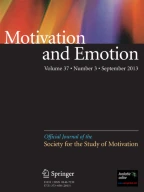Abstract
Thirty-two female undergraduates were presented with varied, mildly stressful incentives while the temperatures of their face and hands were recorded with infrared telethermography. There was an increase of hand skin temperature to film clips intended to generate a happy affect but cooling to threatening personal questions. There was no significant skin temperature change in response to cognitive tasks or fear eliciting film clips. Larger temperature changes occurred on the hands than on the face, and most subjects were cooler on the left side of the face and the left hand than on the right side of face and right hand.
Similar content being viewed by others
References
Boudewyns, P. A. (1976). A comparison of the effects of stress vs. relaxation instruction on the finger temperature response.Behavior Therapy, 7, 54–67.
Braverman, N. C. (1989).Physiological profiles of shy and sociable college women. Unpublished honors thesis, Harvard-Radcliffe Colleges.
Bugental, D. B., & Cortez, V. L. (1988). Physiological reactivity to responsive and unresponsive children as moderated by perceived control.Child Development, 59, 686–693.
Cohen, R. A., & Coffman, J. D. (1981). Beta-adrenergic vasodilator mechanism in the finger.Circulation Research, 49, 1196–1201.
Eccles, R., & Lee, R. L. (1981). The influence of the hypothalamus on the sympathetic innervation of the nasal vasculature of the cat.Acta Otolaryngology, 91, 127–134.
Ekman, P., Levenson, R. W., & Friesen, W. V. (1983). Autonomic nervous system activity distinguishes among emotions.Science, 221, 1208–1210.
Elfvin, L. G., Lindh, B., & Hokfelt, T. (1993). The chemical neuroanatomy of sympathetic ganglia.Annual Review of Neuroscience, 16, 471–507.
Finman, R., Davidson, R. J., Colton, M. B., Straus, A., & Kagan, J. (1989). Psychophysiological correlates of inhibition to the unfamiliar in children [Abstract].Psychophysiology, 26, S24.
Freedman, R. R., Sabharwal, S. C., Ianni, P., Desai, N., Wenig, P., & Mayes, M. (1988). Nonneural beta-adrenergic vasodilating mechanism in temperature feedback.Psychosomatic Medicine, 50, 394–401.
Freeman, H., Linder, F. E., & Nickerson, R. F. (1937). The bilateral symmetry of skin temperature.Journal of Nutrition, 13, 39–49.
Guyton, A. C. (1981).Textbook of medical physiology (6th ed.). Philadelphia: Saunders.
Hales, J. R. S. (1985). Skin arteriovenous anastomoses, their control and role in thermoregulation. In K. Johansen & W. Burggren (Eds.),Cardiovascular shunts: Phylogenetic, ontogenetic, and clinical aspects (pp. 433–451). New York: Raven Press.
Hirota, A., & Hirai, H. (1990). Effects of relaxation-response- or arousal-response-oriented training on psychological responses during fear imagery.Japanese Psychological Research, 32, 26–35.
Jamieson, J. (1987). Bilateral finger temperature and the law of initial values.Psychophysiology, 24, 666–669.
Kagan, J. (1994).Galen prophecy. New York: Basic Books.
Kagan, J., Arcus, D., Snidman, N., Peterson, E., Steinberg, D., & Rimm-Kaufman, S. (1995). Asymmetry of finger temperature and early behavior.Developmental Psychobiology, 28, 443–451.
Kagan, J., Arcus, D., Snidman, N., & Rimm, S. (1995). Asymmetry of forehead temperature and cardiac activity.Neuropsychology, 9, 47–51.
Koller, M., Zidek, H., & Haider, M. (1986). Induced psychophysiological stress reactions in patients suffering from myocardial infarction and peptic ulcer.Activitas Nervosa Superior, 28, 123–128.
Kuriychuk, M., & Jamieson, J. (1982). Bilateral finger temperature differences under hemisphere-specific cognitive activation [Abstract].Psychophysiology, 19, 571.
Leary, M. R., Britt, T. W., Cutlip, W. D., & Templeton, J. L. (1992). Social blushing.Psychological Bulletin, 112, 446–460.
Levenson, R. W., Ekman, P., & Friesen, W. V. (1990). Voluntary facial action generates emotions-specific autonomic nervous system activity.Psychophysiology, 27, 363–384.
Mittelmann, B., & Wolff, H. G. (1943). Emotions and skin temperature: Observations on patients during psychotherapeutic (psychoanalytic) interviews.Psychosomatic Medicine, 5, 211–231.
Mizukami, K., Kobayashi, N., Iwata, H., & Ishii, T. (1989). Telethermography in measurement of infant's early attachment. In C. V. Euler, H. Forssberg, & H. Lagercrantz (Eds.),Neurobiology of early infant behavior (pp. 249–258). New York: Stockton Press.
Randall, W. C., McNally, H., Cowan, J., Caliguiri, L., & Rohse, W. G. (1957). Functional analysis of the cardioaugmentor and cardioaccelerator pathway in the dog.American Journal of Physiology, 191, 213–217.
Rogers, M. C., Battik, G., McPeek, B., & Todd, D. (1978). Lateralization of sympathetic control of the human sinus node.Anesthesiology, 48, 139–141.
Rowell, L. B. (1986).Human circulation regulation during physical stress. New York: Oxford University Press.
Shearn, D., Bergman, E., Hill, K., Abel, A., & Hinds, L. (1990). Facial coloration and temperature response in blushing.Psychophysiology, 27, 687–693.
Sokolov, E. N. (1963). Higher nervous functions: The orienting reflex.Annual Review of Physiology, 25, 545–580.
Sparks, H. V. (1978). Skin and muscle. In P.C. Johnson (Ed.),Peripheral circulation (pp. 193–230). New York: John Wiley and Sons.
Stemmler, G. (1989). The autonomic differentiation of emotions revisited: Convergent and discriminant validation.Psychophysiology, 26, 617–632.
Svebak, S., Storfjell, O., & Dalen, K. (1982). The effect of a threatening context upon motivation and task-induced physiological changes.British Journal of Psychology, 73, 505–512.
Tomarken, A. J., Davidson, R. J., Wheeler, R. E., & Kinney, L. (1992). Psychometric properties of resting anterior EEG asymmetry.Psychophysiology, 29, 576–592.
Uematsu, S., Edwin, D., Jankel, W., Kozikowski, J., & Trattner, M. (1988). Quantification of thermal asymmetry. Part I: Normal values and reproducibility.Journal of Neurosurgery, 69, 552–555.
Weiner, H. (1992).Perturbing the organism. Chicago: The University of Chicago Press.
Yanowitz, F., Preston, J., & Abildskov, J. (1966). Functional distribution of right and left stellate innervation of the ventricles.Circulation Research, 18, 416–428.
Zajonc, R. B., Murphy, S. T., & Inglehart, M. (1989). Feeling and facial efference: Implications of the vascular theory of emotion.Psychological Review, 96(3), 395–416.
Author information
Authors and Affiliations
Additional information
This research was supported by grants from the John D. and Catherine T. MacArthur Foundation Network on Psychopathology and Development and MH47077 by NIMH.
We thank Nancy Snidman, Marie Balaban, Mark Hallahan, Doreen Arcus, Eric Peterson, Hilary Sokolowski, Trina Chang, Edward Shackelford, and Alan Rimm-Kaufman for their assistance in preparing this manuscript. We also thank the anonymous reviewers and the editor for their suggestions. Drawing by Eric Peterson.
Rights and permissions
About this article
Cite this article
Rimm-Kaufman, S.E., Kagan, J. The psychological significance of changes in skin temperature. Motiv Emot 20, 63–78 (1996). https://doi.org/10.1007/BF02251007
Issue Date:
DOI: https://doi.org/10.1007/BF02251007
